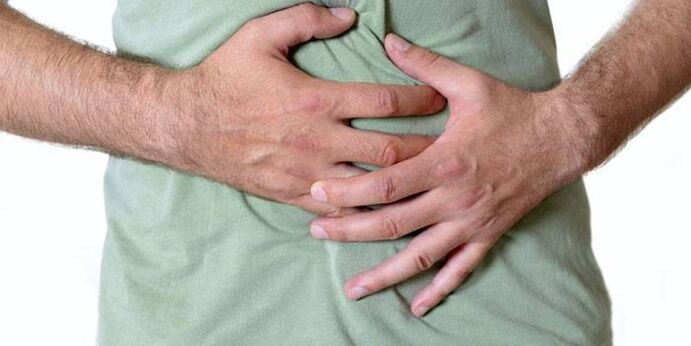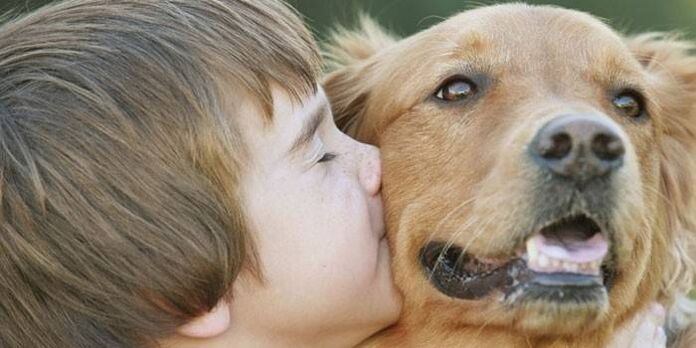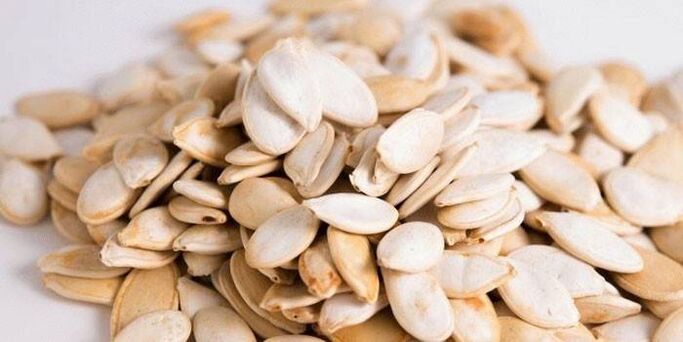Treatment of parasitic diseases is an urgent problem for the population of countries with warm and hot climates. According to the World Health Organization, 25% of the world's population is susceptible to helminth infections. Parasites are able to exist for a long time (for several years) in the body of the host, without leaving their presence and gradually destroying the organs from within. Most helminthiasis is associated with allergic reactions and suppression of immune defenses, which leads to serious illness and even death.
What are worms
Helminths - The general name for parasitic worms, which are owned by a person or an animal. Currently, there are more than 250 species of helminths on the planet (about 90 of them live in the CIS). In length, worms in the human body can reach several meters, but most are 20-40 cm in size. Helminths are able to inhabit almost all organs of the human body, feeding on the internal resources of the host, weakening it and leading to the development of diseases.
The peculiarity of helminths is that their full life cycle can not take place in the host's body - conditions that are not specific to the human body are necessary for the eggs to mature. The prolonged presence of worms is due to re-infection (swallowing of mature eggs in the mouth, and then in the stomach and intestines). Once the helminth eggs enter the human body, the larvae emerge from them and begin to move through the body. Most helminths "live" in the intestines, but some types of worms are able to migrate with the bloodstream to other organs (lungs, liver, heart, brain, eyes).
In the process of infection and further development in adults, worms in the human body have the following pathological effect:
- mechanical violation of the integrity of the intestinal wall;
- exposure to toxic helminth waste products;
- absorption of beneficial substances necessary for a person by the parasite;
- closure of liver ducts, intestinal lumen with worm nodules (it is rare with lesions of large helminths).
Helminthiasis is a group of diseases caused by helminthic invasions. Children are more susceptible to such pathologies, as their immunity is not yet fully formed, and in addition, they are unable to take care of personal hygiene on their own. Further from the child, it is possible to infect adult family members, which contributes to further spread.
For helminthiasis, specific symptoms are not characteristic, as the clinical picture of the worm infection is similar to the signs of pathologies of the gallbladder, liver, gastrointestinal tract, therefore, laboratory tests are needed to establish an accurate diagnosis. In addition, asymptomatic transport is often found, the diagnosis of which is associated with certain difficulties.

kind
Helminths, based on morphological characteristics, are divided into three major groups: round, tapeworm, and flatworms. Each category is divided into several classes. Helminthiases combine in groups based on the type of worm that causes the disease. Characteristics of helminth varieties and the pathologies they cause:
- Roundworms (nematodes) are heterosexual helminths with relatively small size (2-40 cm), are widespread due to the ease of transmission. Nematode infection occurs when parasite eggs enter the host's mouth from carrier feces. The most common representatives of helminths are worms - they are infected in 90% of cases. Worm larvae cause enterobiasis disease, accompanied by severe fatigue, disorders of the gastrointestinal tract. The second most common helminthiasis is caused by the ascaris worm and is called ascariasis - this is a pathology in which parasites infect not only the human intestine but also other organs (liver, lungs, heart). Ascariasis is able to provoke internal bleeding, the appearance of allergic reactions, in children - developmental delays. The so-called whipworm, despite its small size (3-5 cm), can have a toxic effect on the human body for 5 years, causing trichocephaly disease. Influence of Trichinella worms leads to the development of trichinosis, a characteristic feature of which is damage to muscle tissue.
- Tapeworms (cestoses) are the largest representatives of helminths (10-15 meters). These are same-sex parasites, d. m. th. their reproduction is carried out by an individual. A mandatory stage in the life cycle of tapeworms is the development of ungulates in the body. Cestoda eggs enter the environment in the feces of host animals. In addition, infection through contaminated meat is possible. For example, insufficient heat treatment of pork leads to infection with pork ribs, beef - with beef ribs. Echinococcosis, caused by echinococcal worms, for which a person is an intermediate host, is considered a serious parasitic disease. This pathology leads to the formation of cysts in the organs, which can be eliminated only with the help of surgical intervention.
- Flatworms (trematodes) are small (7-30 mm) and usually affect the hepatic and bile ducts. Trematoses can lead to the development of hepatitis, cholelithiasis. The main characteristic of flatworms is the presence of suckers on the surface of the body, which serve to absorb nutrients and blood. Infection with trematoda occurs due to consumption of fish and seafood cooked or poorly cooked. The main representatives of trematodes are hepatic fluxes and schistosomes; the first causes opisthorchiasis, the second - schistosomiasis.
A special place among parasitic invasions occupy protozoan infections caused by the simplest single-celled microorganisms. Reproduction of these parasites occurs through division, so their number increases rapidly. The most common type of unicellular parasite in our region is lamblia, it exists in two forms - vegetation and cysts (spores). According to statistics, every third child suffers from giardiasis, as the infection occurs when only 2-10 lamblia cysts enter the intestine.

Causes
Infection with helminthic and protozoan invasions is carried out by the oral-fecal route - mature eggs or spores enter the mouth and intestines of the host from the feces of infected animals. Science recognizes four main ways of infection:
- Contact - performed when a person comes in contact with an infected carrier (animals, birds, another person), leads to the development of contact helminthiasis.
- Infection through soil and water, which contain disease-causing eggs or cysts, causes geohelminthiasis.
- Infection that occurs when eating raw or inadequately cooked meat and fish leads to the development of biohelminthiasis.
- A small percentage of infections are due to insect bites.
How to treat human worms
The symptoms for lesions from different helminths are usually similar. The most surprising and common signs are sudden weight loss, maltreatment, pale skin, itching in the anus. At the same time, some symptoms can still help establish the diagnosis - for example, disturbances in the functioning of the gastrointestinal tract, nervous system signal the presence of bovine tapeworm in the body, allergic reactions and skin rashes - whipworm, etc. How to remove worms from a person, what methods and medicines exist for this - these issues are treated by an infectious disease doctor.
Determining the correct diagnosis is based on accurately determining the type of pathogenic helminth. This may require laboratory tests (urine, blood, feces, bile) and other diagnostic measures (ultrasound, fluorography). It is necessary to immediately begin the removal of parasites - the longer the helminths are in the body, the harder it is to escape the consequences of losing later. The doctor prescribes treatment based on the patient's weight, gender and age, taking into account the individual characteristics and general condition of the patient.
Successful elimination of worms in humans is ensured not only by treatment with anti-helminthic drugs, but also by adhering to a diet to improve health and prevent new infection. Previously only popular methods were used to get rid of parasites, while now they are used as additional measures to fight helminths, as many synthetic anti-helminthic drugs have appeared on the pharmaceutical market.
The modern pharmacological industry has about 20 drugs for removing worms in humans. Among them are drugs with a narrow and wide spectrum of action:
| Type of drug | Indications |
| Anti-nematodic (aimed at removing roundworms | Enterobiasis, ascariasis, trichocephaly, trichinosis, strongyloidosis, ankilostomyosis |
| Anti-trematode (aimed at removing flatworms) | Schistosomiasis, fascioliasis, opisthorchiasis, clonorchiasis |
| Protivocestodnoy (aimed at removing tapeworms) | Echinococcosis, difilobothriasis, teniasis, teniarinchiasis, diphyllobothriasis |
How to remove worms from a person
Most anthelmintic drugs are effective against adults - eggs and larvae are not very destructive. For this reason, doctors recommend repeating the course after 2-3 weeks to rule out re-infection. In addition, experts advise that when treating certain types of helminthiasis, place an enema in the evening or take a laxative after taking the pill in the morning.
Among the traditional medicines, the most effective are raw pumpkin seeds, garlic, tansy. The mechanism of action of most non-traditional worm-removal drugs and medicines consists in disrupting the work of the helminth's neuromuscular system, suppressing metabolism (due to inhibition of fumarate reductase) and destroying the integral tissues of the worms.
During treatment, the patient may show signs of intoxication: intestinal disorders, headache, vomiting, allergic reactions, abdominal pain. Treatment of worms in people with antiparasitic drugs should be done only according to the doctor's recommendation and according to the manufacturer's instructions, in order to avoid complications and side effects.
tablets
All medications for removing worms should be taken with meals with a glass of juice (water, milk). Comparative characteristics of some tablets for worms. All medicines are forbidden to use during pregnancy and lactation:
| The active substance of the drug | action | Indications | How to apply (for adults) | Side effects | Contraindications |
| Pirantel | Nerve endings blocked in worm muscles | Enterobiasis, ascariasis, nonkatorosis, ankilostomiasis | Up to 75 kg - 15 ml syrup once, 75 kg and more - 20 ml | Dizziness, digestive disorders, skin rash | Liver failure, up to 6 months |
| Carbendazim | Muscular paralysis of parasites | Ascariasis, strongyloidiasis, trichocephaly, noncatorosis | Depends on the type of parasite | Nausea, weakness, allergic reactions | Sensitivity of components |
| Anije Pirvinia | Violation of worm metabolism | Enterobiasis | 5 mg / kg body weight once in the morning after breakfast | Headache, nausea, diarrhea, allergic reactions | Liver failure, up to 3 months |
For a successful fight against parasites, it is important to carefully follow the rules of personal hygiene, to strictly follow the course of treatment prescribed by your doctor. In addition to the use of anti-helminthic drugs, it is recommended to take care of the removal of toxins from the body and restore the functioning of organs, strengthen the immune system. For these purposes, popular recipes (infusions, teas), as well as industrial complexes of vitamins and minerals are widely used.
Folk remedies
The use of traditional medicine prescriptions is very effective in getting rid of parasites. For this purpose, decoctions, tinctures, solutions for enemas from the following natural ingredients are used:
- garlic;
- pumpkin seeds;
- Arre;
- onions;
- herb: dandelion, tansy, wormwood, burdock, nettle;
- oils: hemp, cedar, flax seed, sea urchin.

How to remove worms at home
Some types of helminthiasis are successfully treated at home without hospitalization, but if infected with large types of worms, supportive therapy may be needed in a hospital setting. Removing worms at home involves treatment with medication and the use of alternative medicine. Any funding is accepted only as prescribed by a physician, self-medication is prohibited.
Pumpkin seeds
Pumpkin seeds are considered to be the most popular folk remedy for removing worms due to their negative effect on worms and lack of side reactions. The anti-helminthic properties of this product are due to the presence in them of the substance cucurbitin, which is a poison for most worms. Pumpkin seeds should be consumed with the peel no more than 300 g per day for an adult. Some popular recipes:
- Wash and dry the seeds, grind in a blender, add honey. The mixture should be consumed on an empty stomach, after 4 hours, take a laxative.
- During the day, you should eat 100 g of seeds (divided into 4 servings), after each intake, after an hour, drink a teaspoon of castor oil, the course is 3-4 days.
garlic
Garlic remedies are believed to be effective against roundworms, worms and some types of tapeworms. In addition, garlic has immunostimulatory properties and does not cause serious side effects. Some recipes for garlic medicine:
- Grind 2 lemons and 10 garlic cloves in a meat grinder, mix and place in the fridge. Take the product 1 tablespoon three times a day.
- Pour 200 ml of warm water over a few cloves of minced garlic, leave overnight. Garlic water should be taken daily, 200 ml in the morning on an empty stomach for a week.
Troiçetka
This product contains powders of several plants in different combinations. These drugs not only help fight common helminthic invasions, but also help normalize the work of the gastrointestinal tract:
- Mix tansy, cloves and wormwood in a ratio of 4: 2: 1. Take a mixture of 1 teaspoon a day before meals with water, on the second day eat 2 tablespoons, on all the following days - 3. The course of treatment is14 days.
- Mix the calendula, dried calamus and cumin seeds in a 2: 1: 1 ratio. Take the mixture in a similar way.
Enema from worms
Enemies based on poisonous substances for parasites have been widely used in the elimination of worms. Such procedures are effective only in the case of intestinal helminthiasis. Some popular recipes:
- Add 2-3 cloves of chopped garlic with a glass of milk, bring to a boil, cool. Use the enema solution within 2 weeks. Children under 3 years of age should not be given a garlic enema.
- Pour ½ teaspoon of baking soda with a glass of water, bring to a boil, cool. It is necessary to put a soda enema for 30 minutes. The course of treatment is 7 days.
- 1 tablespoon of minced tansy flowers pour 500 ml of hot water, boil for 15 minutes, then leave for 4 hours. The course of treatment is 5-7 days.






































